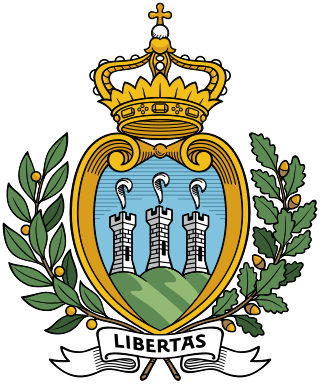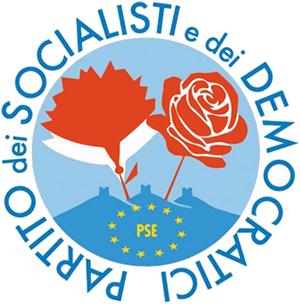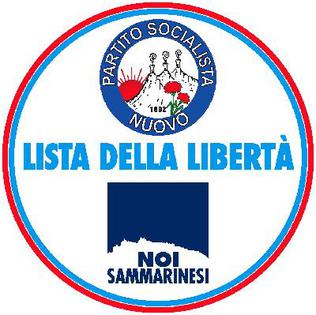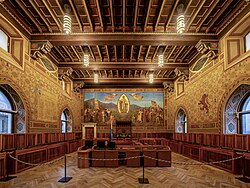
The politics of the state of San Marino take place in a framework of a unitary parliamentary representative democratic republic, whereby the Captains Regent are the heads of state and heads of government. The country has a multi-party system. Executive power is exercised by the government. Legislative power is vested in both the government and the Grand and General Council. The judiciary is independent of the executive and the legislature.

The Sammarinese Christian Democratic Party is a Christian-democratic political party in San Marino.

Captains Regent are the two heads of state of the Republic of San Marino. They are elected every six months by the Grand and General Council, the country's legislative body. Normally the Regents are chosen from parties in coalition and serve a six-month term. The investiture of the Captains Regent takes place on 1 April and 1 October every year. This tradition dates back at least to 1243.

Sammarinese Communist Refoundation was a communist political party in San Marino. It was a member of the European Left.

The Popular Alliance was a liberal-centrist political party in San Marino. The party formed a coalition with the Union for the Republic for the 2016 Sammarinese general election, and following their electoral success the two parties created a new party, Future Republic.

San Marino elects on the national level a legislature. The Grand and General Council has 60 members, elected for a five-year term by semi-proportional representation with national majority bonus.

The Party of Socialists and Democrats is a social-democratic and democratic socialist political party in San Marino. It is a member of the Socialist International, and observer member of the Party of European Socialists. It is the only Sammarinese party with a reference to the European Union in its official political symbol. Its current-day Italian counterpart is the Democratic Party.

United Left was a left-wing political party in San Marino.

The New Socialist Party was a social-democratic political party in San Marino.

We Sammarineses is a conservative-liberal political party in San Marino.

Sammarinese Populars are a Christian-democratic political party in San Marino.
Left Party – Zona Franca was a democratic socialist political party in San Marino whose ideology and history are similar to those of the former party Democratic Left of Italy.
The Arengo was the name of the assembly that ruled San Marino from the fifth century A.D. to 1243, and of the popular councils which regulated the political life in Northern Italy free comuni in the Middle Ages as well. It was made up of the heads of San Marino's Great families and had no leader or fixed meeting place. This made San Marino almost unique in the period as a state that had no Head of State. However this form of rule was cumbersome and the Arengo was crippled by feuds between the Great Families. By the early 13th century the Arengo had become so dysfunctional that the citizens of San Marino decided to elect their own assembly, which they called the Grand and General Council. This assembly became very powerful, and by 1243 the Pope, who was the nominal ruler of San Marino, made the Grand and General Council the supreme body of San Marino.
Snap general elections were held in San Marino on 9 November 2008. They were called after the collapse of the centre-left government which had won the previous 2006 elections.

Pact for San Marino was a centrist coalition of parties for the 2008 general election in San Marino.

Freedom List was an electoral alliance for the 2008 general election in San Marino, composed of:

Arengo and Freedom was a liberal and social liberal political party in San Marino.

The 1906 San Marino citizenry meeting was a session of the Arengo in San Marino. It was the first such meeting in three centuries. It ended oligarchic rule and resulted in the first modern democratic elections in the country.

General elections were held in San Marino on 8 December 2019.













